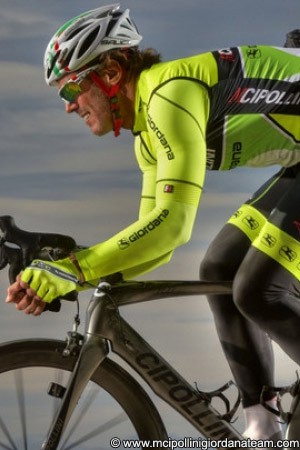Gazzetta dello Sport repeats claims sprinter underwent prolonged doping regime with Fuentes
 In July 2002 Mario Cipollini did something that nobody expected: he retired. He’d had one of the best seasons of his career, finally winning Milan-Sanremo at 35 years of age, taking Gent – Wevelgem and also snaring six stage wins in the Giro d’Italia, and was three months away from a world championship that everyone expected him to win. However the Italian stunned the cycling world when he said that he was leaving the sport.
In July 2002 Mario Cipollini did something that nobody expected: he retired. He’d had one of the best seasons of his career, finally winning Milan-Sanremo at 35 years of age, taking Gent – Wevelgem and also snaring six stage wins in the Giro d’Italia, and was three months away from a world championship that everyone expected him to win. However the Italian stunned the cycling world when he said that he was leaving the sport.
At the time he blamed the non-selection of his Acqua e Sapone team for the Tour de France, a decision that the Tour de France organisers partly took because of the fact that he had pulled out of every Tour he had entered.
While that lack of a wildcard was undoubtedly a disappointment to the Italian, his announcement that he was quitting the sport was still perplexing for two reasons. One, because he had waited many years for a flat world championship course and, as the best sprinter in cycling at the time, he was seen as the rider most likely to win.
Two, because he continued to train hard after supposedly hanging up his wheels on July 9th. Cipollini and team-mate Giovanni Lombardi clocked up many hard kilometres, doing in depth training at a time when many of his competitors were riding the Tour.
This week, Italian newspaper La Gazzetta dello Sport printed what it said was a doping programme laid out for Cipollini by Eufemiano Fuentes, the doping doctor at the centre of the Operacion Puerto investigation.
That programme, which the newspaper states was faxed to a number used by Cipollini at the time and sent to a rider code-named ‘Maria’, details a range of banned substances and methods, including EPO, growth hormones, anabolic steroids, insulin growth factor, gonadotropin and blood transfusions.
It appears to correlate with his times of peak performances, with the chart (see below) indicating biological and chemical peaks tying in with his wins in Milan-Sanremo, Gent Wevelgem, the Giro d’Italia and the worlds.
Interestingly, it also shows a prescribed course of anabolics between July 8th, the day before he announced his retirement, and July 22nd.
Cipollini was already unlikely to be tested at that time due to the fact that he missed the Tour and had no replacement race lined up; in addition to that, out of competition testing was nowhere near as regular as it is nowadays, and his indication that he was finished with the sport made it less likely again that he would be scrutinised.
On July 25th, ‘Maria’ was scheduled to extract blood, then to start a course of growth hormone. Neither of these two doping methods were detectable at the time, but many anabolics were.
Cipollini backtracked on his retirement announcement by riding some criteriums after the end of the Tour on July 28th, then officially announced his decision to remain in the sport on August 6th.
He went on to show excellent end of season form, winning three stages in the Vuelta a España and taking the world road race championships in Zolder, Belgium.
Denials and further accusations:
Cipollini officially denied La Gazzetta’s allegations yesterday via his lawyer, Giuseppe Napoleone. He described the article as making ‘false and absurd accusations’ against his client, and said that the fax number attributed to Cipollini was actually an Italian telephone number not registered to his client. He also said that Cipollini was living in Monaco at the time.
Napoleone added that Cipollini would be willing to undergo blood tests, although it is unclear if the blood bags seized in Operacion Puerto include any attributed to ‘Maria’. Those raids in Spain took place in May 2006, while Cipollini retired over a year earlier in April 2005.
Rather than backing down, La Gazzetta published more claims in today’s paper. It reasserted that ‘Maria’ was indeed Mario, and claimed that Fuentes’ records showed that he had taken EPO on nine consecutive days piror to the 2001 Giro, with a blood transfusion and growth hormone also used.
It said that he also received multiple blood transfusions in 2003, as well as hormone injections.
As for the disputed phone number written on one of Fuentes’ documents, the newspaper said that it called Cipollini on multiple occasions on that same number, which was from Lucca, the town where he is from.
The former pro is likely to continue protesting his innocence. However La Gazzetta’s claims undoubtedly put him in an uncomfortable position. So too his peculiar retirement in 2002, an action which made little sense at the time amid reports he was training hard, but which may assume a new significance if it is indeed the case that Mario was ‘Maria.’
Click on the thumbnail above to see the doping chart published by La Gazzetta dello Sport.